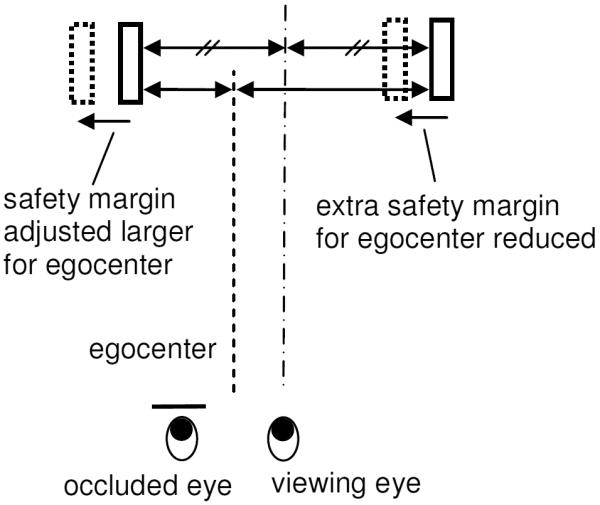Figure 10.

Explanation of the asymmetric PSPD in the simulated-walk experiment. The solid-line rectangles represent two obstacles at equal path offset for the viewing eye (dot-dash line). Since the obstacle on the occluded eye side is actually closer to the egocenter (shown as a dashed line), the participant might require a larger safety margin to this side. Similarly, the safety margin on the viewing eye side may be reduced, as the obstacle on this side is further from the egocenter. Thus, obstacles with a symmetric path offset for the egocenter (illustrated by the dotted-line rectangles) appear asymmetric from the viewing eye.
